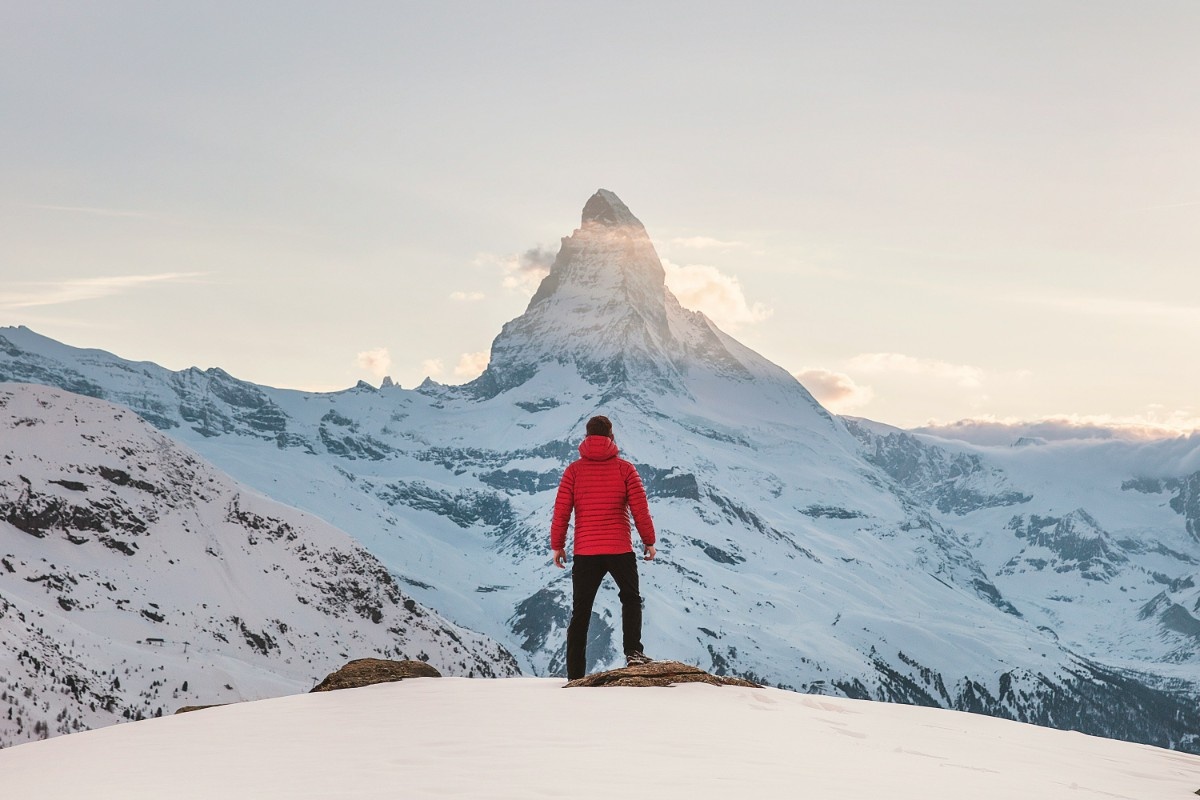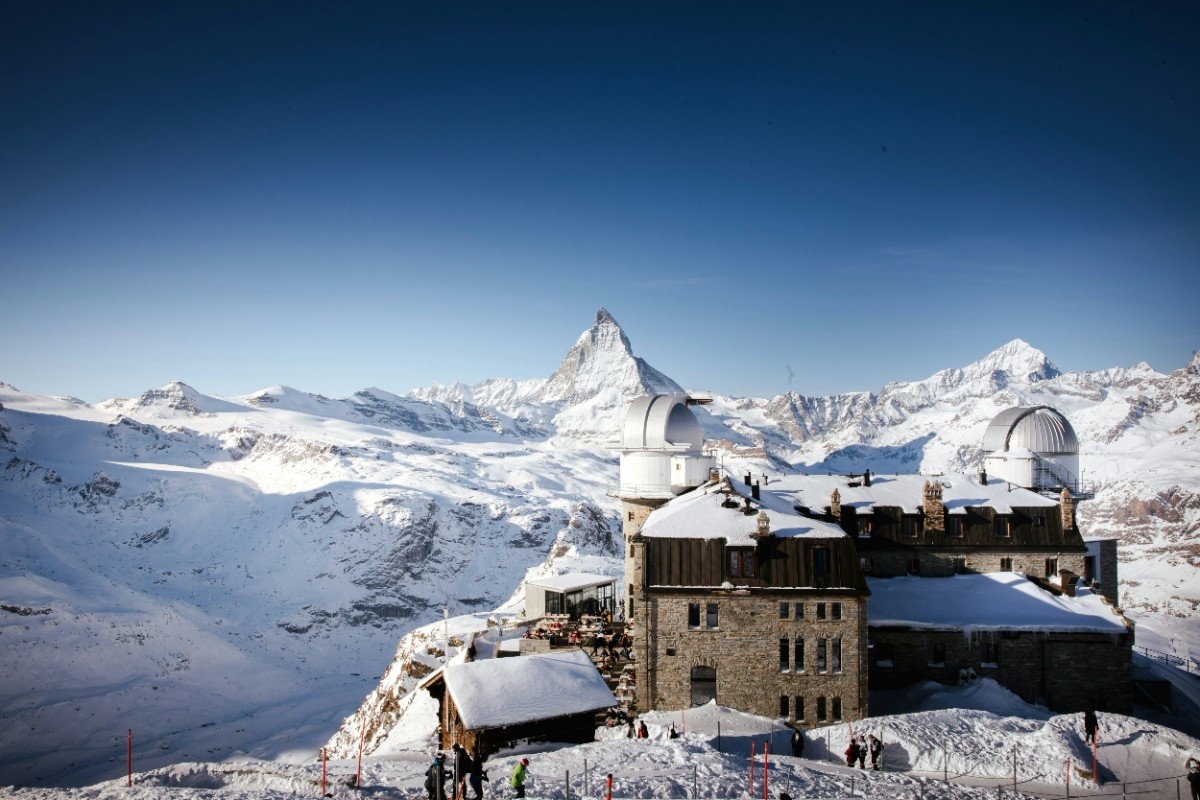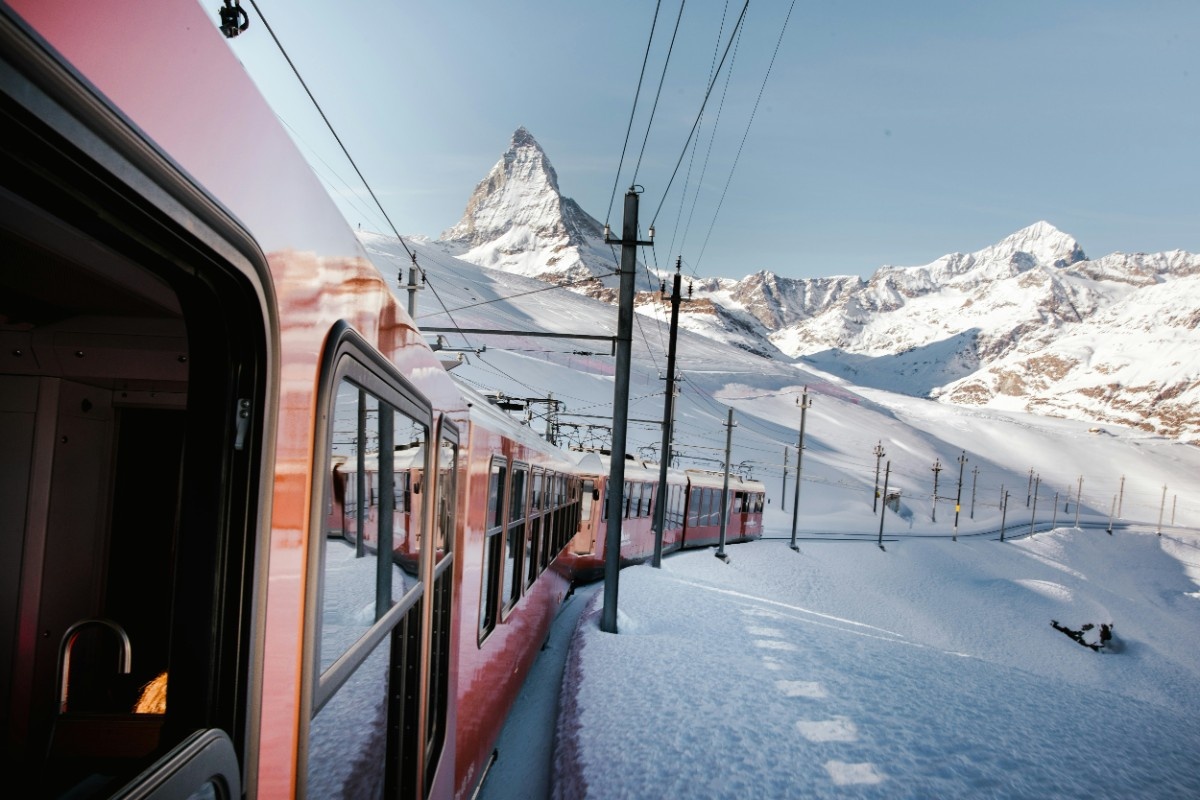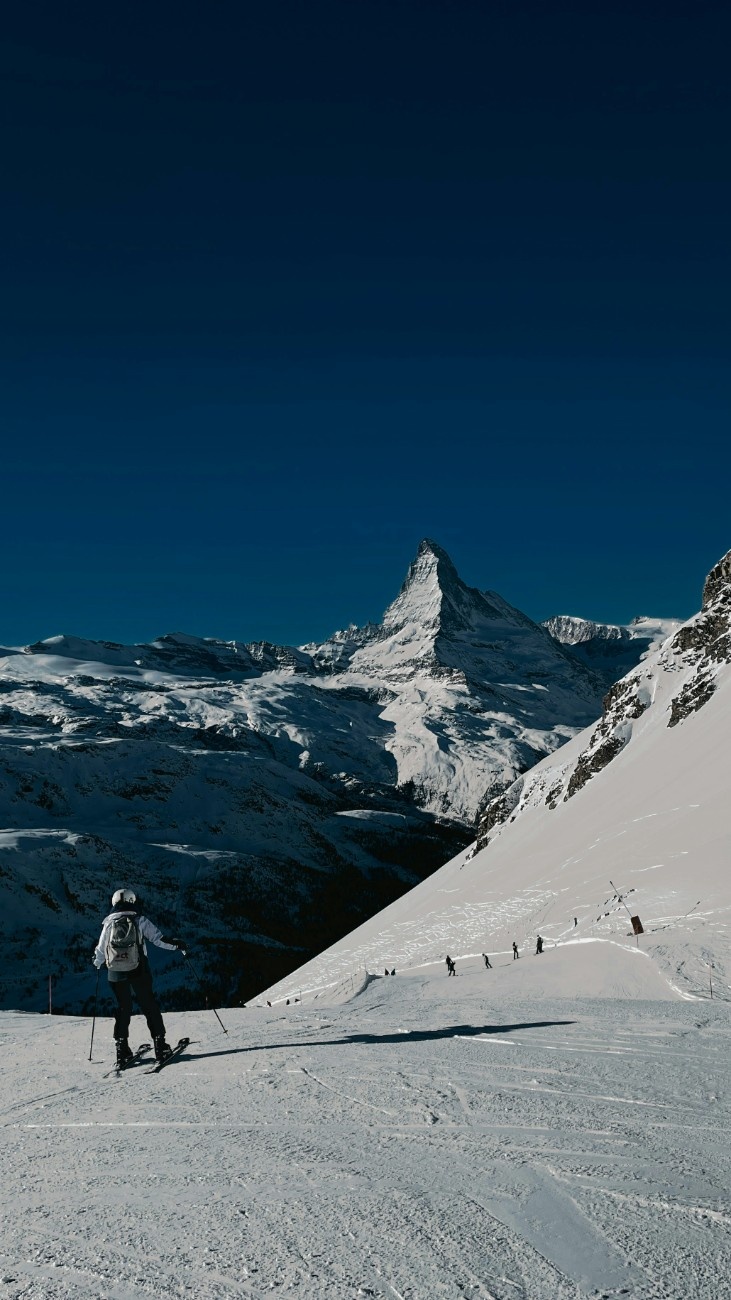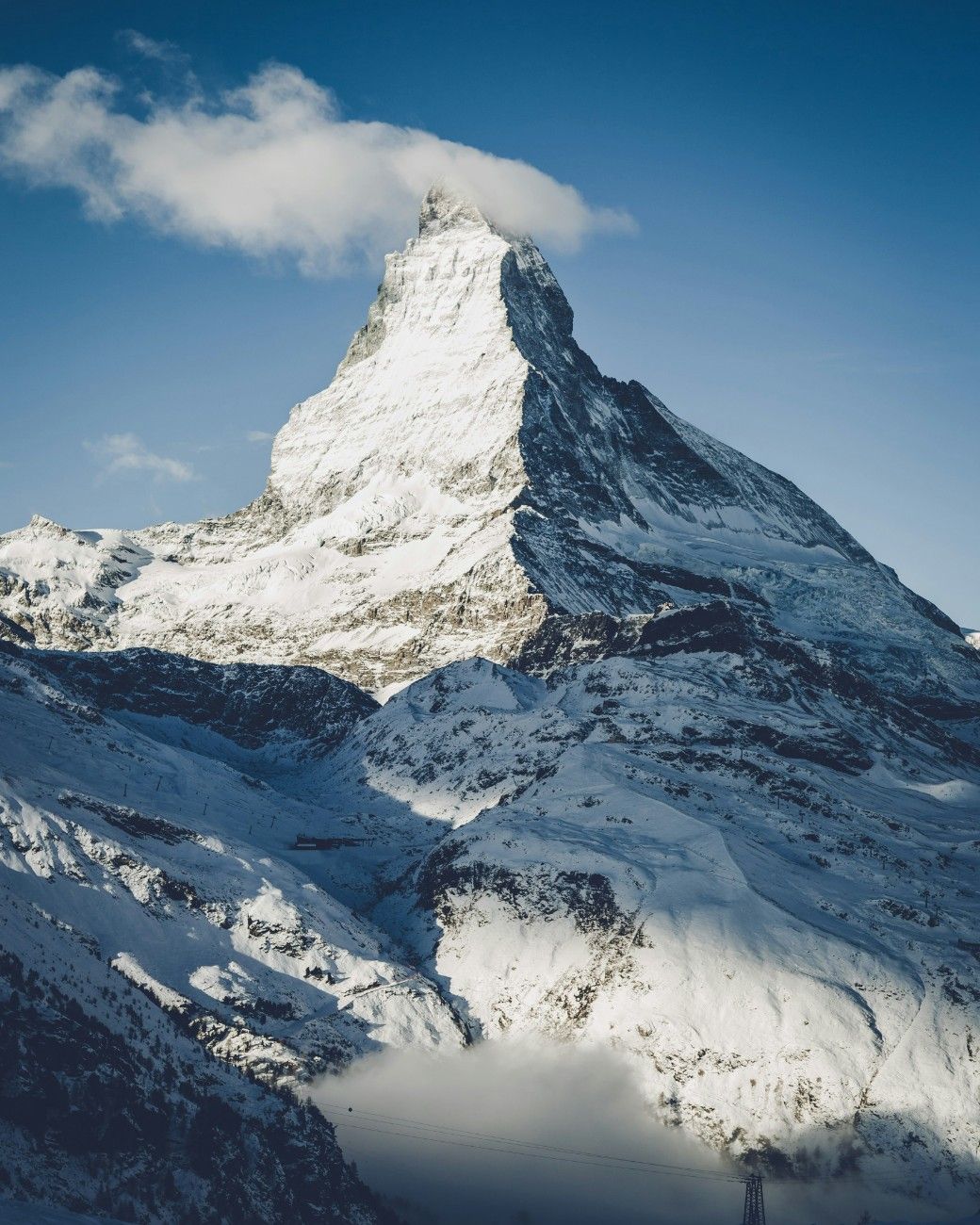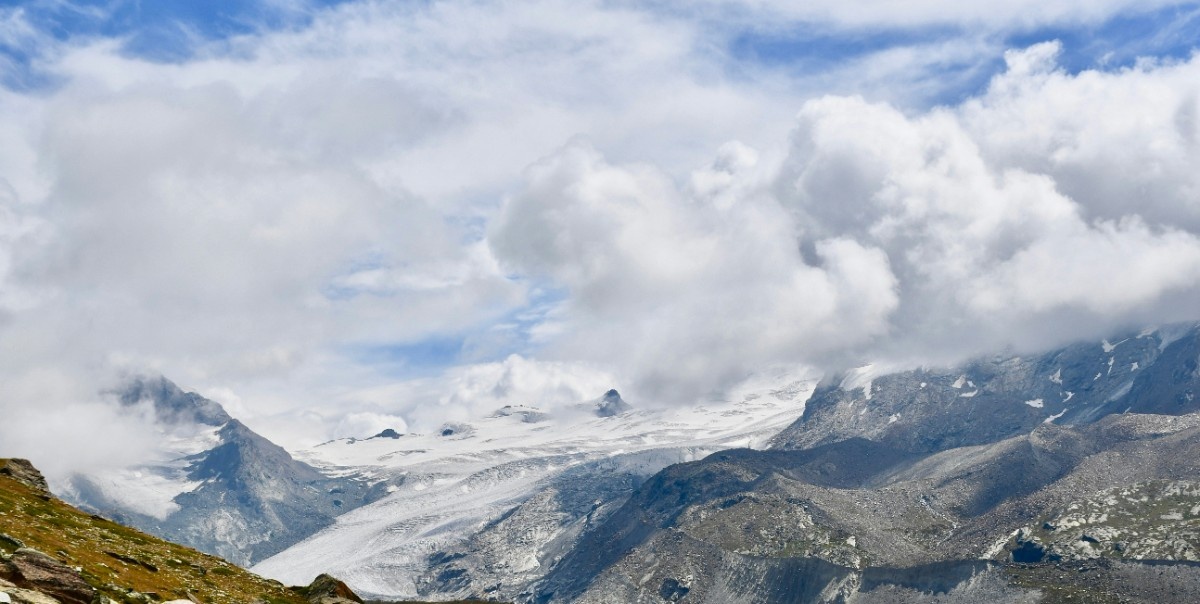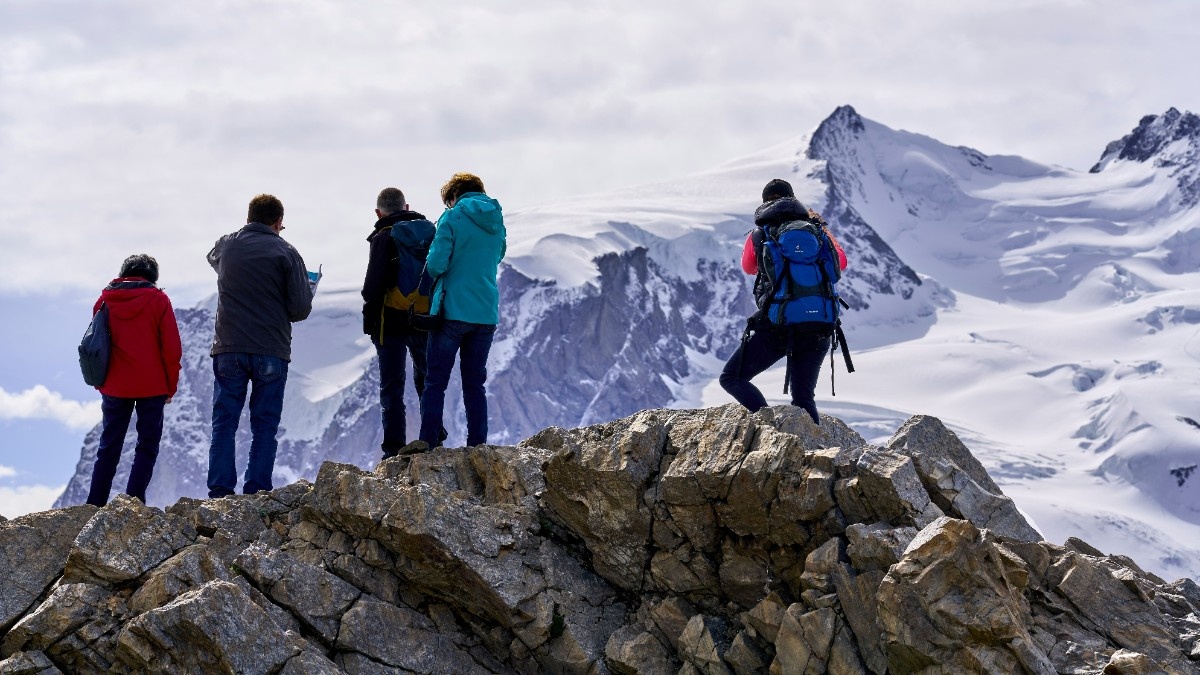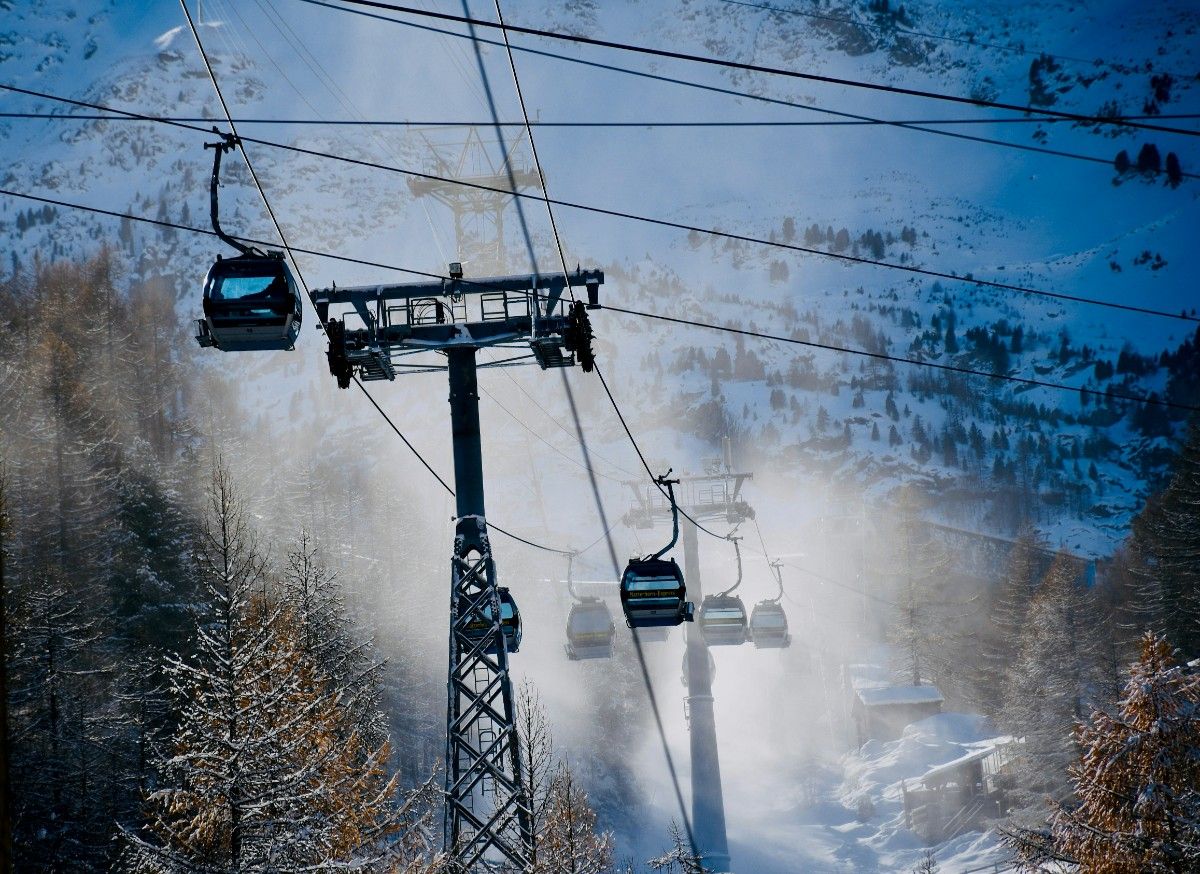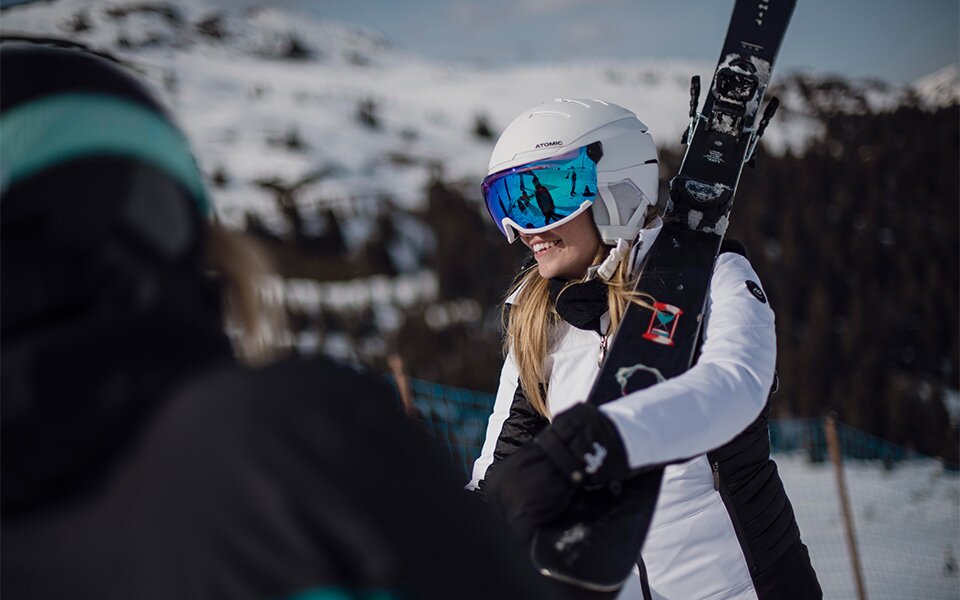Discovering Zermatt: A Swiss Alpine Paradise
The Charm of a Car-Free Village
Nestled in the heart of the Swiss Alps, Zermatt stands as a testament to the perfect blend of natural beauty and human ingenuity. This picturesque village, situated at the foot of the iconic Matterhorn, has captivated visitors for generations with its unique charm and commitment to preserving its Alpine heritage. One of the most distinctive features of Zermatt, Switzerland is its status as a car-free resort, a policy that has been in place since the 1960s.
As you step off the train in Zermatt, the absence of car engines is immediately noticeable. Instead, the air is filled with the gentle hum of electric vehicles, the clip-clop of horse-drawn carriages, and the chatter of excited visitors. This car-free environment not only contributes to the clean mountain air but also creates a peaceful atmosphere that allows visitors to fully immerse themselves in the Alpine experience.
The town of Zermatt is compact and easily navigable on foot, with narrow streets lined with a mix of traditional wooden chalets and modern buildings. As you wander through the village, you'll discover a harmonious blend of old and new. Centuries-old barns and storehouses, known as raccards, stand alongside luxurious hotels and gourmet restaurants, telling the story of Zermatt's evolution from a humble farming village to a world-renowned ski resort.
The car-free policy has not only preserved the village's charm but also necessitated innovative solutions for transportation. A network of electric buses and taxis efficiently ferries visitors and their luggage around the resort. Many hotels also operate their own electric shuttles, ensuring guests can easily access the ski lifts and other attractions. For those who enjoy a touch of nostalgia, horse-drawn carriages offer a romantic way to explore the village, especially magical during the snowy winter months.
The absence of cars also makes Zermatt an exceptionally family-friendly destination. Parents can let their children explore with greater freedom, knowing that they don't have to worry about traffic. The village's pedestrianised centre becomes a natural playground, with children building snowmen in winter or enjoying ice cream on sunny terraces in summer.
While the car-free policy might initially seem like a logistical challenge, most visitors quickly appreciate the tranquillity and cleaner air it provides. The rhythm of life in Zermatt encourages a slower pace, allowing you to fully appreciate the stunning natural surroundings and the simple pleasures of Alpine living. Whether you're watching the alpenglow on the Matterhorn from a village café or listening to the church bells echo across the valley, the car-free environment enhances the sense of escapism that draws so many to this Swiss Alpine paradise.
The Matterhorn: Zermatt's Iconic Backdrop
No discussion of Zermatt would be complete without mentioning its most famous resident: the Matterhorn. This pyramid-shaped peak, standing at 4,478 metres (14,692 feet), is not just a mountain; it's an icon that has come to symbolise the Swiss Alps and the spirit of mountaineering. The Matterhorn's distinctive silhouette dominates the Zermatt skyline, providing a constant source of wonder and inspiration for visitors and locals alike.
The Matterhorn's history is deeply intertwined with that of Zermatt. The first ascent of the mountain in 1865 marked the end of the golden age of alpinism and put Zermatt on the map as a destination for adventurers and mountain enthusiasts. Today, while climbing the Matterhorn remains a serious undertaking reserved for experienced mountaineers, there are numerous ways for all visitors to appreciate its majesty.
One of the best vantage points to admire the Matterhorn is from the Gornergrat. The Gornergrat railway, one of the highest open-air railways in Europe, takes visitors on a scenic journey up to a viewing platform at 3,089 metres. From here, the panorama includes not only the Matterhorn but also 29 other peaks over 4,000 metres high, offering a truly breathtaking Alpine vista.
For those seeking an even higher perspective, the Matterhorn Glacier Paradise cable car ascends to the Klein Matterhorn at 3,883 metres. This is the highest cable car station in Europe, offering year-round skiing and a viewing platform with a 360-degree panorama that stretches as far as the French Alps and Italian Apennines on clear days.
The Matterhorn's changing moods provide endless fascination. Its appearance shifts dramatically with the light and weather conditions, from a golden pyramid at sunrise to a ghostly silhouette in the mist. Photographers flock to Zermatt to capture these ever-changing faces of the mountain, with popular spots including the reflection in the calm waters of Riffelsee or Stellisee lakes.
While the Matterhorn is undoubtedly Zermatt's most famous natural attraction, it's just one part of the stunning Alpine landscape that surrounds the resort. The area boasts numerous glaciers, including the Gorner Glacier, one of the largest in the Alps. These ancient rivers of ice have shaped the landscape over millennia, carving out dramatic valleys and leaving behind a terrain that's as challenging for skiers as it is beautiful to behold.
The presence of the Matterhorn and the surrounding peaks creates a unique microclimate in Zermatt. The resort enjoys a surprisingly high number of sunny days, as clouds often break up against the mountain barriers before reaching the village. This pleasant climate, combined with the high altitude, contributes to the excellent snow conditions in Zermatt Switzerland, making it a popular destination for winter sports enthusiasts.
In every season, the Matterhorn serves as a scenic backdrop for the myriad activities available in Zermatt. Whether you're carving turns on the Zermatt ski resort slopes, hiking through Alpine meadows, or simply enjoying a meal on a sunny terrace, the Matterhorn is an ever-present reminder of the natural beauty that makes Zermatt so special. Its enduring allure continues to draw visitors from around the world, each seeking their own connection with this majestic mountain and the Alpine wonderland that surrounds it.
Exploring the Zermatt Ski Area: A Winter Wonderland
The Extensive Piste Network
The Zermatt ski resort boasts one of the most impressive piste networks in the Alps, offering a vast playground for skiers and snowboarders of all abilities. With 360 kilometres of marked runs spread across three main areas, the Zermatt piste map reveals a complex and varied terrain that can keep even the most avid snow sports enthusiasts entertained for weeks on end.
The three main skiing areas - Sunnegga-Rothorn, Gornergrat-Stockhorn, and Schwarzsee-Matterhorn - each have their own distinct character and appeal. Sunnegga-Rothorn is known for its sunny slopes and family-friendly facilities, making it an ideal starting point for beginners and intermediate skiers. The Wolli park in this area is specially designed for children, offering a safe and fun environment for young skiers to find their feet on the snow.
Gornergrat-Stockhorn offers more challenging terrain, with steep runs and off-piste opportunities that attract advanced skiers. The Stockhorn area, in particular, is renowned for its powder snow and is a favourite among freeriders. Meanwhile, the Schwarzsee-Matterhorn area provides the most dramatic scenery, with runs that bring you face-to-face with the iconic Matterhorn.
One of the unique aspects of skiing in Zermatt is the ability to ski across international borders. The Matterhorn ski paradise extends into Italy, connecting Zermatt with the Italian resort of Cervinia. This international dimension adds an extra layer of excitement to your ski holiday, allowing you to start your day on Swiss slopes and end it in Italy. The Zermatt Switzerland ski map clearly shows these connections, making it easy for skiers to plan their cross-border adventures.
The Zermatt ski map is colour-coded to indicate the difficulty of each run, with blue for beginners, red for intermediates, and black for advanced skiers. Beginners will find plenty of gentle slopes to build their confidence, particularly in the Sunnegga and Gornergrat areas. Intermediate skiers are spoilt for choice, with numerous red runs offering a perfect balance of challenge and enjoyment. For expert skiers, Zermatt offers some of the most demanding pistes in the Alps, including the Triftji mogul field and the National piste, which provides a thrilling descent with stunning views of the Matterhorn.
Zermatt's high altitude, with slopes ranging from 1,620 to 3,883 meters, ensures excellent snow conditions in Zermatt Switzerland throughout a long season. The resort typically opens in late November and stays open until early May, with glacier skiing available year-round. This altitude advantage, combined with extensive snowmaking facilities covering over 80% of the pistes, makes Zermatt one of the most snow-sure resorts in the Alps.
The piste network is serviced by a state-of-the-art lift system, including high-speed gondolas, chair lifts, and cable cars. The Matterhorn glacier paradise cable car, which reaches the highest point of the ski area at 3,883 metres, is a marvel of engineering and offers breathtaking views of the surrounding Alpine panorama. These efficient lifts minimise queuing times, allowing skiers to maximise their time on the slopes.
For those who love to clock up the miles, Zermatt offers several long-distance ski routes. The most famous of these is the Matterhorn ski safari, a 10,000 vertical meter descent that takes you through all of Zermatt's ski areas and even into Italy. This challenging route is a true test of endurance and skill, offering a mix of on-piste and off-piste skiing against the backdrop of some of the Alps' most spectacular scenery.
Off-Piste Adventures and Freeride Opportunities
While Zermatt's groomed runs are impressive, it's the off-piste terrain that truly sets this resort apart for advanced skiers and snowboarders. The Zermatt ski resort offers some of the best freeride opportunities in the Alps, with vast expanses of untouched powder and challenging terrain that will thrill even the most experienced riders.
The Stockhorn area is particularly renowned for its off-piste possibilities. This high-altitude sector often boasts excellent snow conditions and offers a variety of challenging descents. The north-facing slopes here hold the snow well, providing powder opportunities even days after a snowfall. However, it's important to note that off-piste skiing should only be attempted with proper equipment and preferably under the guidance of a local mountain guide, as the terrain can be complex and avalanche risk is a real concern.
Another popular area for freeriding is the Schwarzsee sector. Here, experienced skiers can find challenging couloirs and steep descents with the majestic Matterhorn as a backdrop. The Stafelalp run, which descends from Schwarzsee to the hamlet of Zmutt, offers a thrilling off-piste experience when conditions allow.
For those seeking the ultimate off-piste adventure, heli-skiing is available in Zermatt. This exclusive experience allows skiers to access remote, untouched powder fields that are inaccessible by lifts. Popular heli-skiing drops include the Monte Rosa massif and the Ascha glacier, both offering long descents through pristine Alpine terrain.
Zermatt also caters to the growing popularity of ski touring. The resort offers several marked ski touring routes, allowing enthusiasts to explore the backcountry safely. These routes are regularly assessed for avalanche risk and offer a great introduction to ski touring for those looking to venture beyond the marked pistes.
For freestyle enthusiasts, Zermatt doesn't disappoint. The Gravity Park on the Theodul Glacier is a haven for tricks and jumps, with features suitable for beginners through to experts. The park is regularly updated throughout the season to keep things fresh and challenging. For those new to freestyle, there are also several easier snow parks scattered throughout the resort where you can practice your skills in a less intimidating environment.
It's worth noting that while off-piste skiing offers unparalleled thrills, it also comes with increased risks. Zermatt takes safety seriously and provides daily updates on snow conditions and avalanche risk. The resort strongly recommends that anyone venturing off-piste should carry appropriate safety equipment (avalanche transceiver, shovel, and probe) and have the knowledge to use it. For those looking to improve their off-piste skills and safety knowledge, several ski schools in Zermatt offer specialised freeride courses and avalanche safety training.
The combination of extensive off-piste terrain, reliable snow conditions, and world-class safety measures makes Zermatt a mecca for freeride enthusiasts. Whether you're dropping into a steep couloir, floating through powder fields, or launching off natural features, the off-piste adventures in Zermatt offer an exhilarating dimension to your ski holiday. Just remember, as you stand atop a pristine powder field with the Matterhorn looming in the distance, that respect for the mountain and proper preparation are key to safely enjoying all that Zermatt's backcountry has to offer.
Accommodation in Zermatt: From Luxury Hotels to Cosy Chalets
Luxury Lodgings: Five-Star Hotels and Spas
Zermatt is renowned for its high-end accommodation options, catering to discerning travellers who seek the utmost in comfort and luxury. The resort boasts an impressive array of five-star hotels in Zermatt, each offering a unique blend of Swiss hospitality, world-class amenities, and stunning views of the surrounding Alpine landscape.
One of the most iconic luxury establishments is the Mont Cervin Palace. This grand hotel has been welcoming guests since 1851 and continues to set the standard for luxury in Zermatt. With its Belle Époque façade and modern interiors, it epitomises the blend of tradition and contemporary comfort that Zermatt is known for. The hotel's spa facilities are particularly impressive, featuring an indoor-outdoor pool that allows guests to swim beneath the stars with the Matterhorn as their backdrop.
For those seeking a more contemporary aesthetic, the Omnia Mountain Lodge offers a modern take on Alpine luxury. Perched on a rocky outcrop above Zermatt, this design hotel features sleek interiors, a stunning wellness area carved into the rock, and panoramic views of the surrounding mountains. The hotel's restaurant, which has been awarded a Michelin star, is a destination in itself, attracting food lovers from around the world.
Many of Zermatt's luxury hotels boast extensive spa and wellness facilities, recognising that after a day on the slopes, there's nothing better than some pampering and relaxation. The Hotel Alpen Resort & Spa, for example, features a 1,200 square metre spa area with indoor and outdoor pools, various saunas and steam rooms, and a comprehensive menu of treatments designed to soothe tired muscles and rejuvenate the spirit.
For those who prefer to be closer to the action, several luxury hotels offer ski-in, ski-out access. The Riffelalp Resort 2222m, accessible only by train or cable car, sits at an altitude of 2,222 metres and offers unparalleled views and direct access to the pistes. Despite its remote location, the hotel doesn't compromise on luxury, featuring multiple restaurants, a spa, and even Europe's highest outdoor pool.
These luxury accommodations in Zermatt go beyond just providing a place to sleep. They offer a complete Alpine experience, with services such as private ski butlers, in-house ski rental and fitting, and even helipads for those arriving by helicopter. Many also feature gourmet restaurants showcasing the best of Swiss and international cuisine, often with breathtaking views of the Matterhorn as a backdrop.
It's worth noting that while these luxury hotels come with a premium price tag, they offer an unparalleled level of service and amenities that can truly elevate your Zermatt experience. From the moment you arrive, you'll be enveloped in an atmosphere of refined comfort and attentive service, allowing you to fully immerse yourself in the magic of this Alpine paradise.
Whether you're looking for a romantic getaway, a family ski holiday, or simply a place to indulge in some well-deserved luxury, Zermatt's high-end hotels offer something for everyone. With their blend of traditional Swiss charm and modern luxury, these establishments provide a perfect base from which to explore all that Zermatt has to offer, ensuring that your time off the slopes is just as memorable as your adventures on them.
Charming Chalets and Apartments: Home Away from Home
While Zermatt is known for its luxury hotels, it also offers a wide range of charming chalets and apartments that provide a more homely and flexible accommodation option. These self-catering properties allow visitors to experience Zermatt like a local, offering privacy, space, and the freedom to set your own schedule.
Traditional Swiss chalets are a popular choice for those seeking an authentic Alpine experience. These wooden structures, with their sloping roofs designed to shed snow, are quintessentially Swiss and offer a cosy, rustic atmosphere. Many have been lovingly restored, maintaining their original charm while incorporating modern amenities to ensure a comfortable stay.
The Chalet Bergheim, for example, is a standalone chalet near the Matterhorn Express base station that embodies this blend of traditional and modern. With its wood-panelled interiors, open fireplace, and stunning views of the Matterhorn, it offers a cosy retreat after a day on the slopes. Despite its traditional appearance, it's equipped with all modern conveniences, including a fully fitted kitchen, Wi-Fi, and even a sauna.
For larger groups or families, Zermatt offers a range of spacious apartments. These can be found both in the heart of the village and in quieter, residential areas. The Chalet Apartment Sunstar Style, for instance, provides modern, well-appointed apartments in a central location. With fully equipped kitchens, living areas, and balconies offering Matterhorn views, these apartments provide a home-away-from-home feel while still offering hotel-style services such as daily cleaning and breakfast delivery.
One of the advantages of choosing a chalet or apartment is the flexibility it offers. You can prepare your own meals using local Swiss produce, enjoy leisurely breakfasts before hitting the slopes, or relax with a home-cooked dinner after a day of skiing. Many properties also offer additional services such as grocery delivery, making self-catering a convenient option.
For those who want the best of both worlds, some chalets and apartments in Zermatt offer hotel-style services. The Matthiol Serviced Apartments, for example, combine the space and privacy of apartment living with the convenience of hotel services, including daily housekeeping, a reception desk, and access to spa facilities.
It's worth noting that due to Zermatt's car-free status, many chalets and apartments offer electric shuttle services to transport you and your luggage from the train station. Some properties also provide ski storage facilities either on-site or at the base of the ski lifts, making it easy to manage your equipment.
When choosing a chalet or apartment in Zermatt, consider its location carefully. Properties in the centre of the village offer easy access to shops, restaurants, and nightlife, but can be busier and noisier. Those on the outskirts often provide more space and tranquillity, but may require a bit more effort to reach the ski lifts or village amenities.
Booking a chalet or apartment can be an economical choice for longer stays or for groups, as the per-person cost often works out less than hotel accommodation. However, it's advisable to book well in advance, especially for peak periods, as the best properties tend to get reserved quickly.
Whether you choose a traditional wooden chalet with Matterhorn views or a modern apartment in the heart of the village, self-catering accommodation in Zermatt offers a unique way to experience this Alpine paradise. It allows you to create your own home in the mountains, providing a personal and authentic base for your Swiss adventure.
Getting to Zermatt: A Journey Through Swiss Scenery
The Scenic Route: From Geneva to Zermatt
The journey from Geneva to Zermatt is not merely a means of transportation; it's an integral part of the Swiss Alpine experience, offering travellers a chance to witness the country's stunning landscapes before even reaching the ski resort. As Zermatt is a car-free village, most visitors arrive by train, and the route from Geneva provides a perfect introduction to the efficiency and beauty of the Swiss rail system.
The adventure typically begins at Geneva Airport, one of Switzerland's main international gateways. Upon arrival, you'll find the train station conveniently located within the airport complex. The Swiss Federal Railways (SBB) operates regular services that connect Geneva Airport to Visp, where passengers change to the Matterhorn Gotthard Bahn for the final leg to Zermatt.
As you leave Geneva, the train skirts the northern shore of Lake Geneva, offering picturesque views of the lake's blue waters and the terraced vineyards of the Lavaux region, a UNESCO World Heritage site. This initial part of the journey provides a gentle introduction to the Swiss landscape, with the Alps visible on the horizon, hinting at the grandeur to come.
The train then turns inland, following the Rhône Valley eastward. This is where the scenery begins to change dramatically. The wide, flat valley gradually narrows, and the mountains on either side grow taller and more imposing. You'll pass through numerous small Swiss towns and villages, each with its own charm and character. The journey from Geneva to Visp takes approximately 2.5 hours, but the time flies by as you're treated to an ever-changing panorama outside your window.
At Visp, you'll change to the Matterhorn Gotthard Bahn, a narrow-gauge railway that will take you on the final leg to Zermatt. This part of the journey is particularly spectacular. The train climbs steadily through the Matter Valley, using a rack-and-pinion system to navigate the steep gradients. As you ascend, the views become increasingly dramatic, with snow-capped peaks appearing on the horizon.
The anticipation builds as you near Zermatt, with fleeting glimpses of the Matterhorn teasing passengers before the train pulls into the station. The entire journey from Geneva to Zermatt typically takes between 3.5 to 4 hours, depending on connections. While it might seem long, the time passes quickly as you're immersed in the changing Swiss landscape.
It's worth noting that the Swiss Travel System is known for its punctuality and efficiency. Trains run like clockwork, and connections are carefully timed to minimise waiting periods. The stations along the route are well-equipped, often featuring cafes and shops where you can grab a snack or a coffee during any layovers.
For those who prefer a more direct route, private transfers are available from Geneva Airport to Täsch, the nearest town to Zermatt accessible by car. From Täsch, you'll need to take a shuttle train for the final 12-minute journey to Zermatt. While this option can be more expensive than the train, it offers greater flexibility and can be more convenient for families or groups travelling with a lot of luggage.
Regardless of how you choose to make the journey from Geneva to Zermatt, it's important to remember that Zermatt itself is car-free. Upon arrival in Zermatt, you'll find a fleet of electric taxis and buses ready to transport you and your luggage to your accommodation. Many hotels also offer their own electric shuttle services for guests.
The journey from Geneva to Zermatt is more than just a transfer; it's an opportunity to witness the diverse beauty of the Swiss landscape, from lakeside vineyards to dramatic Alpine peaks. As you watch the scenery transform outside your window, you'll find yourself transitioning into holiday mode, ready to embrace all that Zermatt has to offer. By the time you catch your first glimpse of the Matterhorn, you'll understand why the journey to Zermatt is an integral part of the Swiss Alpine experience.
Alternative Routes and Transportation Options
While the route from Geneva to Zermatt is popular, it's not the only way to reach this Alpine paradise. Switzerland's excellent transportation network offers several alternative routes and options, each with its own unique charm and scenery.
For those flying into Zurich, Switzerland's largest city, the train journey to Zermatt offers a different but equally stunning experience. The route takes you through the heart of Switzerland, passing by Lake Lucerne and through the impressive Gotthard Base Tunnel, the world's longest and deepest traffic tunnel. This engineering marvel, opened in 2016, has significantly reduced travel times from northern Switzerland to the Alpine regions. The journey from Zurich to Zermatt typically takes around 3.5 hours and offers a fascinating cross-section of Swiss landscapes, from urban centres to rural heartlands and finally to the high Alps.
Another option is to fly into the smaller, regional airport of Sion in the Valais canton. While Sion handles fewer international flights than Geneva or Zurich, it can be a convenient option during the winter season when some airlines operate charter flights directly to this Alpine airport. From Sion, it's a shorter train or transfer journey to Zermatt, allowing you to reach the resort more quickly.
For those already in Switzerland or coming from neighbouring countries, the Swiss rail network offers numerous routes to Zermatt. Cities like Bern, Basel, and Lausanne all have good connections to Zermatt, often requiring just one or two changes. The Swiss Travel Pass can be an excellent investment for visitors planning to explore more of Switzerland before or after their stay in Zermatt. This all-in-one ticket offers unlimited travel on the Swiss Travel System network, including trains, buses, and boats.
If you're driving to the area, remember that Zermatt is a car-free resort. You'll need to leave your vehicle in one of the parking facilities in Täsch, the last town before Zermatt accessible by road. From there, you can take the shuttle train to Zermatt. These trains run every 20 minutes, and the journey takes just 12 minutes, making it a quick and easy transfer.
For those seeking a truly memorable arrival, it's possible to reach Zermatt by helicopter. Air Zermatt offers transfers from various Swiss airports directly to the Zermatt heliport. While this is certainly the most expensive option, it provides unparalleled views of the Alps and can significantly reduce travel time. Imagine soaring over snow-capped peaks and glaciers before touching down in Zermatt with the Matterhorn looming overhead – it's an unforgettable way to start your Swiss adventure.
Once you've arrived in Zermatt, you'll find that the compact nature of the village makes it easy to get around on foot. However, for those times when you need to transport luggage or if you're staying in one of the outlying areas, the electric buses and taxis are readily available. Many of the larger hotels also operate their own electric vehicles to shuttle guests around the resort.
It's worth noting that whatever route you choose to reach Zermatt, the final approach to the village is always spectacular. Whether you're on the train winding up the Matter Valley, in a helicopter swooping past the Matterhorn, or on the shuttle from Täsch, the anticipation builds as you near your destination. The car-free policy means that from the moment you arrive, you're immersed in the peaceful, Alpine atmosphere that makes Zermatt so special.
In conclusion, while there are multiple ways to reach Zermatt, each offering its own unique perspective on the Swiss landscape, they all share one thing in common: they're not merely about getting from A to B, but about beginning your Alpine adventure from the moment you set off. Whether you choose the scenic train ride from Geneva, the direct route from Zurich, or the luxurious helicopter transfer, your journey to Zermatt is sure to be as memorable as your stay in this remarkable Swiss resort.
Snow Conditions and Best Time to Visit Zermatt
Understanding Zermatt's Snow Conditions
The snow conditions in Zermatt Switzerland are renowned for their reliability and quality, making it one of the most sought-after ski destinations in the Alps. The resort's high altitude, with slopes ranging from 1,620 to 3,883 metres, plays a crucial role in ensuring excellent snow coverage throughout a long season. Understanding the nuances of Zermatt's snow conditions can help you plan the perfect ski holiday.
Zermatt benefits from its location in the southern Swiss Alps, where it's sheltered by high mountain peaks. This unique geographical position often results in stable weather patterns and protects the area from some of the warmer winds that can affect lower-lying resorts. The presence of the Matterhorn and other high peaks creates a microclimate that contributes to favourable snow conditions.
The ski season in Zermatt typically runs from late November to early May, with glacier skiing available year-round. Early in the season, snowfall usually begins to accumulate on the higher slopes, with the Matterhorn Glacier Paradise often opening for skiing as early as October. As the season progresses, snow cover extends to lower altitudes, usually providing top-to-bottom skiing by December.
Mid-winter, from January to March, usually offers the best snow conditions in Zermatt Switzerland. During these months, the resort often experiences regular snowfall, building up a substantial base on the pistes. The cold temperatures at this time of year help to preserve the snow quality, often resulting in excellent powder conditions, especially on north-facing slopes.
One of Zermatt's unique features is its high-altitude glacier skiing. The Theodul Glacier, accessible via the Matterhorn Glacier Paradise cable car, offers year-round skiing. Even in the height of summer, when the village is green and hikers are exploring Alpine meadows, you can still find snow-sure conditions at altitude. This makes Zermatt an excellent choice for those looking to improve their skiing skills during the off-season or for professional athletes training for winter competitions.
Zermatt's commitment to providing excellent skiing conditions is evident in its extensive snowmaking capabilities. Over 80% of the resort's pistes are covered by snowmaking facilities, allowing the resort to supplement natural snowfall when necessary. This system helps to ensure good skiing conditions even when natural snowfall is less abundant, particularly on the lower slopes and key connecting runs.
The Zermatt snow conditions are closely monitored and reported daily. The resort employs a team of experienced piste bashers and snow experts who work tirelessly to maintain the slopes in top condition. Daily snow reports provide information on snow depth at various altitudes, the number of open lifts and pistes, and the general skiing conditions. This information is invaluable for planning your day on the mountain and can be easily accessed through the resort's website or mobile app.
It's worth noting that snow conditions can vary across Zermatt's extensive ski area. The resort's three main sectors - Sunnegga-Rothorn, Gornergrat-Stockhorn, and Schwarzsee-Matterhorn - each have their own microclimates and snow characteristics. Generally, the higher altitude areas and north-facing slopes tend to have the best snow preservation, while south-facing slopes may experience more sun-affected snow, especially later in the season.
For off-piste enthusiasts, Zermatt's snow conditions offer exciting opportunities. The resort's high altitude and varied terrain can result in excellent powder conditions after fresh snowfall. However, it's crucial to note that off-piste skiing should only be attempted with proper equipment and preferably under the guidance of a local mountain guide, as avalanche risk can be significant in some areas.
Understanding and respecting the snow conditions is key to enjoying your time in Zermatt safely. The resort provides regular updates on avalanche risk and piste conditions, and it's important to heed these warnings and adjust your skiing accordingly. By staying informed about the snow conditions and choosing appropriate runs for your skill level, you can make the most of Zermatt's world-class skiing, whether you're carving turns on perfectly groomed pistes or floating through fresh powder in the backcountry.
Seasonal Variations and the Best Time to Visit
Choosing the best time to visit Zermatt depends on various factors, including your preferences for snow conditions, crowd levels, and other activities. Each period of the ski season in Zermatt has its own characteristics, and understanding these can help you plan the perfect trip to this Swiss Alpine paradise.
The early season, typically from late November to mid-December, can be an excellent time to visit for those seeking quieter slopes and potentially lower prices. While snow conditions can be variable at this time, Zermatt's high-altitude slopes and extensive snowmaking capabilities usually ensure good skiing, particularly on the upper runs. The Zermatt ski resort often opens some of its glacier runs as early as October, making it one of the first non-glacier resorts in the Alps to start its winter season.
The Christmas and New Year period is undoubtedly one of the busiest and most festive times in Zermatt. The village is beautifully decorated, and there's a magical atmosphere with various holiday events and activities. Snow conditions are typically excellent by this time, with most of the ski area open. However, this period also sees peak crowds and prices, so it's essential to book well in advance if you're planning a holiday visit.
January is often overlooked by many skiers, but it can be an excellent time to visit Zermatt. After the New Year's crowds have departed, you'll find quieter slopes and some of the best snow conditions of the season. The days are short and it can be very cold, but the powder opportunities can be fantastic, especially if you're willing to explore off-piste with a guide. This is also typically one of the most affordable times to visit outside of the early and late season.
February is traditionally the peak of the ski season in Zermatt. Snow conditions are usually at their best, with a deep base on the pistes and excellent powder opportunities off-piste. However, it's also one of the busiest months, particularly during the European school holidays. If you're planning to visit in February, booking well in advance is essential, and you should be prepared for busier slopes and higher prices.
March offers a excellent balance of good snow conditions and more comfortable temperatures. The days are noticeably longer, allowing for extended time on the slopes. While the lower runs may start to soften in the afternoon sun, the high-altitude areas often retain excellent snow conditions. March is also when some of Zermatt's most popular events take place, such as the Zermatt Unplugged music festival, adding an extra dimension to your ski holiday.
April marks the beginning of spring skiing in Zermatt. While lower slopes may start to show signs of the changing season, the high-altitude areas often still offer excellent skiing conditions. This is a great time for those who enjoy combining skiing with sunbathing and après-ski on sun-drenched terraces. The Zermatt Unplugged festival, which usually takes place in April, brings a festive atmosphere to the resort.
For summer skiing enthusiasts, Zermatt's glacier ski area remains open throughout the summer months. While the skiable terrain is more limited compared to the winter season, it offers a unique opportunity to enjoy snow sports alongside summer activities like hiking and mountain biking. The summer ski area is particularly popular with ski teams and enthusiasts looking to maintain their skills during the off-season.
When deciding on the best time to visit Zermatt, it's also worth considering factors beyond just the snow conditions. The resort hosts various events throughout the year that can add an extra dimension to your trip. For instance, the Zermatt Marathon in July offers a challenging mountain running experience, while the Swiss Food Festival in August celebrates the best of Swiss cuisine.
It's important to note that due to Zermatt's popularity and reputation for excellent snow conditions, the resort can be busy throughout much of the winter season. If you're looking for a quieter experience, consider visiting during the shoulder seasons (early December or late April) or midweek rather than weekends.
Ultimately, the best time to visit Zermatt depends on your personal preferences. Whether you're seeking the best powder, the liveliest après-ski scene, or the most affordable rates, Zermatt offers something special in every season. By understanding the seasonal variations and planning accordingly, you can ensure that your visit to this iconic Swiss resort lives up to your expectations, allowing you to create unforgettable memories against the backdrop of the majestic Matterhorn.
Beyond Skiing: Other Activities and Attractions in Zermatt
Winter Activities for Non-Skiers
While Zermatt is primarily renowned for its exceptional skiing and snowboarding opportunities, the resort offers a wealth of activities for non-skiers, ensuring that everyone can enjoy the winter wonderland. From leisurely walks through snowy landscapes to adrenaline-pumping adventures, Zermatt has something to offer every visitor, regardless of their skiing ability.
One of the most popular activities for non-skiers is winter hiking. Zermatt maintains over 70 kilometres of cleared winter walking trails, allowing visitors to explore the stunning Alpine scenery at a leisurely pace. These trails range from easy village walks to more challenging mountain paths, all offering breathtaking views of the surrounding peaks, including the iconic Matterhorn. The Zermatt tourism office provides detailed maps and information on these trails, making it easy for visitors to find a route that suits their fitness level and interests.
For those seeking a bit more adventure, snowshoeing is an excellent way to explore Zermatt's winter wonderland off the beaten path. Guided snowshoe tours are available, taking you through pristine snow-covered forests and offering the chance to spot local wildlife. These tours often include stops at mountain restaurants, allowing you to refuel with traditional Swiss cuisine while enjoying panoramic views.
Another unique way to experience the beauty of Zermatt in winter is by taking a scenic train ride. The Gornergrat railway, one of the highest open-air railways in Europe, offers a breathtaking journey to a viewing platform at 3,089 metres. From here, you can enjoy spectacular views of the Matterhorn and the surrounding Alpine panorama, all without having to strap on a pair of skis.
For those who want to experience the thrill of mountain descents without skiing, sledging (or sledding) is a popular alternative. Zermatt offers several sledging runs, including a 10-kilometer trail from Rotenboden to Riffelberg, which is illuminated for night sledging on certain days. This activity is suitable for all ages and provides a fun-filled way to enjoy the snowy slopes.
Zermatt also caters to those seeking relaxation and wellness experiences. Many hotels boast extensive spa facilities where you can soothe tired muscles or simply indulge in some pampering. From saunas and steam rooms to indoor pools with views of the Matterhorn, these wellness offerings provide a perfect way to unwind after a day of winter activities.
For a unique perspective on the Alpine landscape, consider a scenic helicopter flight. These flights offer unparalleled views of the Matterhorn and the surrounding peaks, providing a truly unforgettable experience. While more expensive than other activities, it's a once-in-a-lifetime opportunity to see the Alps from a bird's eye view.
Ice skating is another popular winter activity in Zermatt. The resort maintains an ice rink in the centre of the village, providing a picturesque setting for a spin on the ice. It's a fun activity for all ages and a great way to spend an afternoon or evening if you're looking for a break from the slopes.
For those interested in the local culture and history, the Zermatlantis Matterhorn Museum offers fascinating insights into Zermatt's past. This underground museum features exhibits on the first ascent of the Matterhorn, the development of tourism in the region, and the traditional way of life in this Alpine community.
Zermatt's car-free status makes it a paradise for strollers, with the charming village streets offering plenty to explore. From boutique shops selling Swiss watches and chocolates to cosy cafes serving hot chocolate and apple strudel, there's no shortage of ways to while away an afternoon in the village.
Finally, for those who want to experience the mountain environment without the physical exertion, Zermatt offers numerous mountain restaurants accessible by cable car. These establishments range from rustic huts serving traditional Swiss fare to gourmet restaurants with Michelin stars. Enjoying a long lunch with stunning mountain views is a quintessential Zermatt experience, whether you're a skier or not.
In conclusion, while skiing remains the primary draw for many visitors to Zermatt, the resort offers a diverse range of winter activities that cater to all interests and abilities. From active adventures to cultural experiences and relaxation opportunities, non-skiers will find plenty to keep them entertained in this Swiss Alpine paradise.
Year-Round Attractions and Summer Activities
While Zermatt is primarily known as a winter destination, it's equally captivating in the summer months, offering a wide array of activities and attractions that showcase the beauty of the Alps in a different light. As the snow melts, it reveals a landscape of lush Alpine meadows, crystal-clear mountain lakes, and a network of hiking and mountain biking trails that attract outdoor enthusiasts from around the world.
One of the main draws of Zermatt in summer is its extensive network of hiking trails. The resort boasts over 400 kilometres of marked paths, ranging from easy valley walks to challenging high-altitude treks. The Five Lakes Walk is particularly popular, taking hikers past five mountain lakes, each offering a unique reflection of the Matterhorn. For more adventurous hikers, the Haute Route, which connects Zermatt to Chamonix in France, offers a multi-day trekking experience through some of the most spectacular scenery in the Alps.
Mountain biking is another popular summer activity in Zermatt. The resort offers over 100 kilometres of marked trails catering to different skill levels. The Zermatt Bike Park features a range of downhill tracks, while cross-country riders can explore numerous trails in the surrounding valleys. E-bikes are also available for rent, making it easier for less experienced cyclists to enjoy the mountain terrain.
One of Zermatt's unique features is its year-round skiing opportunities. The Matterhorn Glacier Paradise offers summer skiing and snowboarding on the Theodul Glacier, with several kilometres of pistes open throughout the summer months. This provides a rare opportunity to combine summer activities with winter sports, making Zermatt a truly versatile destination.
For those interested in mountaineering, Zermatt is a world-renowned base for Alpine climbing. While ascending the Matterhorn requires serious skill and experience, there are numerous other peaks and climbing routes suitable for various levels of expertise. Guided climbs are available, allowing visitors to safely experience the thrill of Alpine mountaineering.
Golf enthusiasts can enjoy a round at one of the highest courses in Europe. The 9-hole Matterhorn Golf Club, situated at an altitude of 1,400 meters, offers a challenging course with stunning mountain views. The thin mountain air adds an extra dimension to the game, making club selection particularly crucial.
Zermatt's summer calendar is packed with events that showcase the local culture and attract visitors from around the world. The Zermatt Marathon in July is one of the most scenic (and challenging) marathon courses in the world. The Zermatt Music Festival in September offers a programme of classical music concerts in unique Alpine settings.
For those interested in local flora and fauna, summer in Zermatt offers excellent opportunities for nature observation. The Alpine Botanical Garden, located near the Blauherd station, showcases over 200 species of Alpine plants, offering insights into the unique ecosystem of the high mountains. Wildlife enthusiasts might spot marmots, chamois, and even the occasional ibex in the surrounding mountains.
Zermatt's car-free status makes it particularly appealing in summer, allowing visitors to enjoy the fresh mountain air and peaceful atmosphere. Electric buses and taxis provide transportation within the village, while an efficient network of cable cars and mountain railways allows easy access to higher altitudes.
The resort's commitment to sustainability is evident in many of its summer offerings. Zermatt has been awarded the "Energy Town" label for its efforts in promoting renewable energy and sustainable tourism. Visitors can learn about these initiatives at various information points throughout the resort.
Summer in Zermatt also offers the chance to enjoy the resort's excellent dining scene in a different light. Many mountain restaurants open their sun terraces, allowing diners to enjoy gourmet meals with panoramic views of the Alps. The longer days provide ample opportunity for leisurely lunches and sunset dinners with the Matterhorn as a backdrop.
For a truly unique experience, consider spending a night in a mountain hut. The Monte Rosa Hut, a futuristic, eco-friendly building perched at 2,883 meters, offers basic but comfortable accommodation and unparalleled stargazing opportunities. It's a popular base for mountaineers but is also accessible to hikers looking for an unforgettable overnight adventure.
In conclusion, while Zermatt's reputation as a world-class ski resort is well -deserved, its appeal extends far beyond the winter months. The summer season reveals a different side of this Alpine paradise, offering a diverse range of activities that cater to all interests and abilities. From challenging hikes and mountain bike trails to leisurely strolls and gourmet experiences, Zermatt in summer provides a perfect blend of adventure, relaxation, and natural beauty.
The ability to enjoy both summer and winter activities makes Zermatt a truly year-round destination. Whether you're scaling a peak, teeing off on one of Europe's highest golf courses, or simply soaking in the views of the Matterhorn from a sunny terrace, Zermatt offers unforgettable experiences in every season. This versatility, combined with the resort's commitment to sustainability and preservation of its natural environment, ensures that Zermatt remains a top choice for discerning travellers seeking an authentic Alpine experience, regardless of when they choose to visit.
Related Articles

Let us know you agree to cookies
We use marketing, analytical and functional cookies as well as similar technologies to give you the best experience. Third parties, including social media platforms, often place tracking cookies on our site to show you personalised adverts outside of our website.
We store your cookie preferences for two years and you can edit your preferences via ‘manage cookies’ or through the cookie policy at the bottom of every page. For more information, please see our cookie policy.

